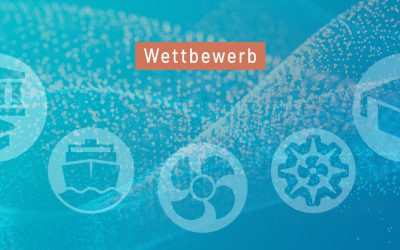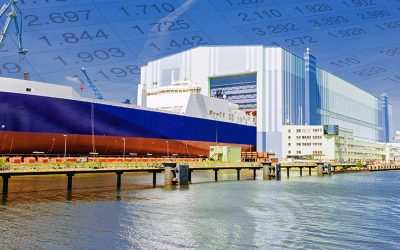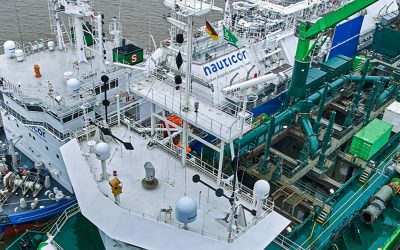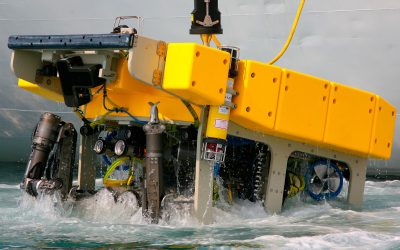
Capt. Runa Jörgens
Head of Issues and Projects
Phone: +49 40 9999 698 - 71
E-Mail: Joergens[at]dmz-maritim.de
If the consequences of global warming are to be kept within manageable limits, the international community must find and use alternatives to fossil fuels. Man-made greenhouse gas emissions must be reduced to zero. The Paris Climate Accords of 2015 envisage achieving this by 2050. According to recognised forecasts by the Intergovernmental Panel on Climate Change (IPCC), there is a certain emissions budget that should not be exceeded on the path to zero emissions. Clear steps towards this goal have been defined.
The necessary phase-out of fossil fuels will also affect the maritime sector and hence shipping. The efficiency-boosting measures for reducing emissions in shipping that have thus far been defined by the IMO will not be sufficient to hit the zero emissions goal. In order to achieve this, the fossil fuels used on ships in combustion engines and boilers as a source of fuel and power must be replaced by verifiably CO2eq-neutral energy sources.
In 2021, the German Maritime Centre (DMZ) commissioned Ramboll Deutschland GmbH to prepare an overview of the fuels and energy sources available for shipping (including compatibility, availability and emissions potential by ship segment) in a study. The study was tasked with examining the different perspectives – from the point of view of users, fuel producers and energy suppliers, bunker providers, approval authorities, shipyards, suppliers. It was also required to draw up recommendations on how the transition to CO2 neutrality can be designed and which measures, laws and regulations are necessary or need to be adapted for this purpose.
The study examined the shipping fleet currently in operation with reference to German maritime stakeholders. It included about 10,000 ships of all types and sizes, from inland vessels to cruise ships and large oil tankers.
The study is divided into the following key points: 1. Fuel catalogue, 2. Fleet analysis, 3. Fuel potential, 4. Recommendations for action
In the first part of the study, established marine fuels and the most promising regenerative alternatives from today’s perspective were described and analysed in detail.
The study examined heavy fuel oil (HFO), marine gas oil (MGO), natural gas, liquid natural gas (LNG) and liquified petroleum gas (LPG), which in principle can also be produced synthetically in a regenerative way or biologically. On the other hand, hydrogen (H₂), methanol (CH₄O), ammonia (NH₃) and “mains electricity” (accumulators as an on-board storage medium) were investigated as “new” fuels.
All fuels were assessed for use in shipping in terms of the technology readiness level (TRL) and in a SWOT analysis. Furthermore, the report presents production efficiencies (fossil/bio/e-fuels) up to the ship.
In addition to criteria such as current market prices, availability etc., the respective CO2eq missions from production to power generation on board were also considered: well to tank (WtT), plus tank-to-propeller(TtP) = well-to-propeller (WtP). Another focus of the study here was the bunker market and prices, also for some alternative fuels, such as grey and green hydrogen, standardised to [$/MWh].
In the second part, the above-mentioned fleet was examined in terms of technical specifications and current routes.
The essential point here is the consideration of the current bunker frequencies and the analysis of the fleet’s ability to convert to the new fuels. The report provides the fuel consumption of the fleet (data from 2019) that is potentially to be replaced by alternative fuels.
Furthermore, it examines the current volume of new construction worldwide to determine which fuel types are planned, or whether new ships that can use alternative fuels or are potentially being prepared for this are already being commissioned/constructed. The report lists current costs for the retrofitting or new construction of engine and tank systems that will be incurred if these alternative fuels are to come. Prices for building new complete container ships with classic diesel engines and also potentially alternative fuels (methanol & LNG) were also assessed.
The analysis showed that the vast majority of new ships continue to be planned with classic diesel drives or with as yet unspecified drives. However, these diesel engine systems can basically be operated with synthetic diesel (bio or e-fuels). This is relevant because ships have a long life span of often more than 25 years.
The third part examined in detail the constraints that apply when converting a ship to alternative fuels, depending on the type of ship. The report outlines the criteria for the conversion and discusses the framework conditions (regulations, necessary support programmes, pricing of CO2 emissions, etc.) under which the conversion can also make sense economically.
In the fourth part, recommendations for the successful establishment of new regenerative fuels for shipping are presented to the respective stakeholders in the conversion process. These concern the necessary (international) legal framework. Here, the viable and verifiable assessment of CO2 emissions and their documentation for these fuels is of central importance. Furthermore, the expansion of production capacities, including a bunker infrastructure, and the development of support programmes in the ramp-up phases must be advanced.
The study concludes that
- All liquefied gases and the “new” fuels of methanol and ammonia have a significantly lower volumetric energy density compared to classic diesel. More ship space must therefore be provided for their storage on board or bunker frequencies must be increased.
- So far, hardly any alternative fuels have been used in the fleet studied.
- The current global order book for ship building shows a similar picture. The majority of the ships are designed to comply with the applicable IMO regulations for the reduction of pollutant emissions (sulphur and nitrogen oxides), using the established (fossil) marine fuels.
- In the quest to reduce greenhouse gas emissions, almost only the corresponding energy efficiency targets have been met to date. Moreover, the currently applicable IMO targets do not provide for the use of regenerative energy sources.
- There is no corresponding set of valid regulations for determining CO2 reduction via regeneratively produced fuel, including via fuel blends.
- National and international rules and regulations are lacking.
What the technical and, above all, the logistical solutions in energy supply will look like in 30 years, i.e. in a ship’s lifetime, can hardly be predicted at present.
A trend towards one specific regenerative fuel, which could not only be used for supply and storage on board but also for conversion into propulsion power and power supply, is not yet discernible. This does not make it easy for buyers of required newly built tonnage to decide on a propulsion concept at present. This is because the drive concept should ensure that no more greenhouse gases are emitted in the overall energy supply chain in the future.
It is important to avoid – as with the introduction of LNG as a clean fuel – another “chicken-and-egg problem” that lasts for decades. It would therefore be expedient to take the initiative to establish “green corridors of shipping” – with commensurate, internationally well-coordinated funding. On these routes, ships could sail powered by alternative fuels and with assured bunker options. It is important to create the technical and logistical basis for these green corridors of shipping. They belong in the context of the decarbonisation of the global economy.



























